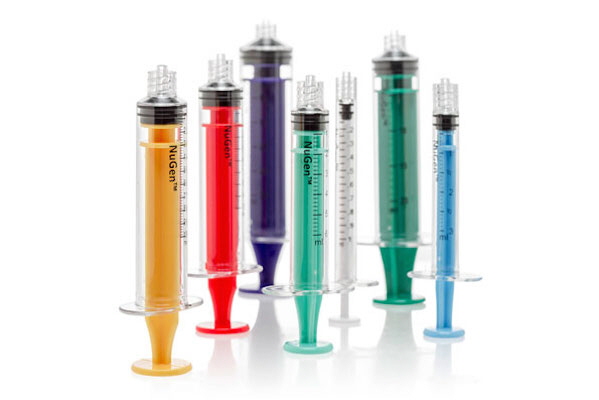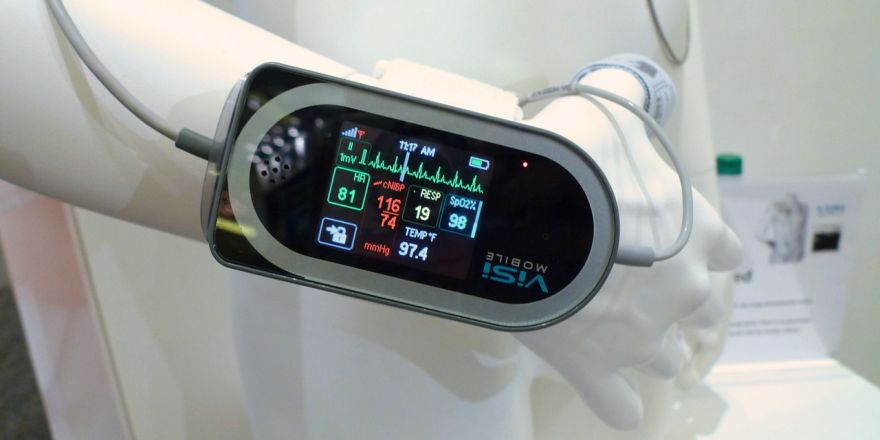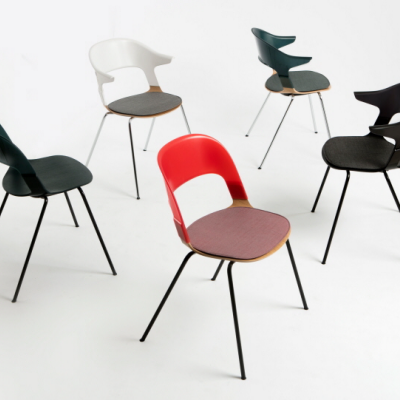This article is part of the Design for Impact series, a collaboration between Core77 and Autodesk focused on designers using their craft to promote environmental and social change.
Imagine the moment a baby is born. In a complications-free birth, the infant is delivered to the safety of its mother's arms where it feels the mother's heartbeat, rises and falls with the mother's breath, snuggles into and smells the mother's skin, and hears the mother's voice. Several medical studies have described the importance of this early maternal-infant bonding for the survival and development of an infant as well as the basis for a child's sense of self. Nurturing designed by nature.
Babies delivered prematurely do not benefit from those critical, intimate moments of nurturing care. While every parent hopes for a complications-free birth, the reality is 15,000,000 children are born premature every year across the globe – approximately 10% of all births. In the United States, these newborns, due to unfortunate necessity, are taken from their mothers and placed in the isolation of an incubator to receive medical interventions that monitor infant health, provide doctors with critical information and deliver medical care. In the NICU, nurturing is tertiary to safety and practicality.
![]() A prematurely born infant
A prematurely born infantCamilo Anabalon, the designer behind BabyBe, wants to ensure all infants have access to the benefits of immediate physical nourishment. His work aims to offer premature infants the same emotional care available to those delivered complications-free by facilitating the nurturing crucial for them to thrive.
You Are Not Alone
The physiological benefits of care—breathing, heartbeat, sound and touch—are emotional cues that signal to babies that they are not alone, that they are connected and cared for. "Babies are quite isolated inside of the NICU. They are inside an incubator, which is full of lights and sounds. There is not much real contact with the baby's body," says Anabalon.
Physical contact between mother and baby helps both recover faster. Research shows that babies taken out of the incubator and placed on the mother's chest improve 50% faster than those who experience no physical contact. A clinical trial currently supported by the National institutes of Health is investigating the critical role neo-natal nurturing plays in a baby's development. According to the study, "Mother-infant interactions are the foundation for the organization of the infant's neurobiological, sensory, perceptual, emotional, physical, and relational systems." The dilemma is that many babies are too fragile to be allowed out of the incubator for even brief moments until they become more stable.
BabyBe delivers the benefits of contact with the mother's body to babies who cannot be taken away from the incubator machine. The baby sits inside the bionic mattress, which mimics the feeling of lying against the mother's body with a soft, breathable, polyurethane gel material that emulates body density and skin texture. On the other side of the incubator, the parent (mother or father) wears the "turtle" component, which transmits breathing sounds and a heartbeat to the mattress. Haptic systems allow the infant to both hear and feel the parent's signals. BabyBe also features a recording feature, which can play the mother's voice— allowing her to sing to, talk to and sooth her newborn.
![]() The bionic mattress and "turtle" component of BabyBe with a simulated infant
The bionic mattress and "turtle" component of BabyBe with a simulated infantThe emotional feedback loop between mother and baby activates physiological changes that improve both infant and maternal health.
The mother's physiological information is essentially the only experience the baby has ever known. "When the baby reconnects with that feeling that he or she already knows and feels, he or she can develop this sense of closeness, this sense of comfort, which triggers relaxation, which then reduces cortisol levels and increases oxytocin levels," says Anabalon.
Medical research shows that high levels of cortisol work against the development of major organs in infants. Reducing cortisol and increasing oxytocin helps the body heal itself. Says Anabalon, "this relaxation state promotes better digestion, so the baby gains weight faster; and slows breathing which improves oxygenation." The body initiates a chain reaction of self-healing.
Designed to Communicate
When Anabalon began to develop BabyBe, he was delighted to partner with Autodesk. He found that Autodesk's software gave him the ability to think deeply about functionality, to get into the mechanics of it, and play with the form factor.
"When I was first introduced to Fusion 360 technology I was like, 'This is the perfect mix.'" As Anabalon describes it, Fusion 360 was the Rage Against the Machine of software, mixing the best elements of the genre to make something exceptionally powerful. "You have the mechanical tools for engineering married to the artistic or design-driven elements," he says.
![]() Camilo using Fusion360 to prototype BabyBe
Camilo using Fusion360 to prototype BabyBeFor Anabalon, a critical feature is the ability to communicate both overall vision and specific technical details. With medical technology, the constraints can mean the difference between a device that gets approved by regulators and one that sits on a shelf. "You have to be able to communicate a lot of information to manufacturers because they are making something that is so new and that has such specific requirements and needs and you need them to be able to see the possibilities of how to take your concept and to turn it into something that's really usable," he says.
Anabalon and his partner, Raphael Lang, are often on different continents, yet with Fusion 360, working in different locations no longer means delays or miscommunication. They conduct live reviews of the device as if they're in the same room. "That's really valuable for us because instead of just talking about a production detail, we go to the file and solve the problem together."
![]() Camilo Anabalon and Raphael Lang with BabyBe
Camilo Anabalon and Raphael Lang with BabyBeFor Pam Hochman of the Autodesk Entrepreneur Impact Program, the choice to support Anabalon's work is clear. "This project is such a gorgeous marriage between hard science and human connection. And of course, it shows the power of a designer to see beyond what the technology does (monitoring and collecting data) to how it can facilitate interaction and healing," she says.
The Technological is Personal
Anabalon observed mothers' gestures with babies to learn how they connect at this most basic level. It's the simple, subtle moments that seemed to mean so much.
"We watched how mothers held their babies, patting on the back and caressing their necks. We observed how, when mothers got into this maternal state of mind, their heartbeats changed, their breathing changed, their voice changed. That's the information the baby needs. That's information we need to deliver to the baby," says Anabalon.
Medical technology can seem dry and technical. But in reality, it is fundamentally personal. A medical intervention has the potential to save not just one life, but the lives of a family and community.
For Anabalon, the personal aspect of his work came into focus when a good friend called to say that her baby needed to be delivered pre-term at 28 weeks. She implored him, "Man, you are my only chance."
The clinic allowed the mother to use BabyBe. "She told me how incredibly meaningful it was for her to be able just to see that her own heartbeat and breathing was with her baby when she has to go home to take care of her older son. It was something that touched the fiber inside of me."
![]() BabyBe at work
BabyBe at workBuilding Knowledge Together
Anabalon is eager to increase BabyBe's implementation in hospitals and clinics. "We are looking for partners who want to conduct research on the device," he says. The more BabyBe is used, the more feedback there is to inform its functionality and design. With any luck, Anabalon hopes BabyBe will soon be available for any parent who wants to provide their infant with the immediate nourishment of their touch and presence.
![]()
















































































